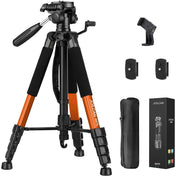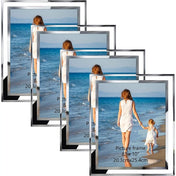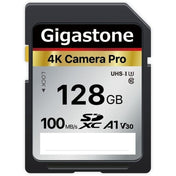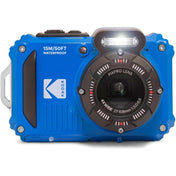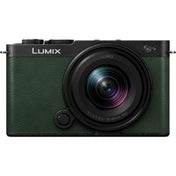Your choice of camera can make a significant difference in your photography experience and outcomes. Whether you're a novice, a budding enthusiast, or a seasoned professional, understanding the types of cameras available can help you make an informed decision. In this blog post, we'll delve into the three primary types of cameras: DSLRs, mirrorless cameras, and compact cameras, highlighting their unique features, advantages, and ideal uses. Plus, we’ll stylishly tie in how your photographs can be beautifully showcased in elegant wooden frames, adding that finishing touch to your photography art.
Understanding Camera Types
When it comes to photography, there are three major categories of cameras that you need to know about:
- Digital Single-Lens Reflex (DSLR)
- Mirrorless Cameras
- Compact Cameras
Each category has its own set of benefits, capabilities, and ideal applications. Let's explore these in detail.
Digital Single-Lens Reflex (DSLR) Cameras
DSLR cameras are some of the most popular choices among both amateur and professional photographers due to their performance and versatility. Here’s why they stand out:
How DSLRs Work
DSLR cameras operate using a mirror mechanism that reflects light from the lens up into an optical viewfinder. When you click the shutter, the mirror flips up, allowing light to hit the image sensor and capture the photograph. This design offers a real-time view of what the lens sees, enabling photographers to frame their shots accurately.
Advantages of DSLRs
Here are some of the benefits of using a DSLR camera:
- Image Quality: DSLRs typically have larger sensors, which translate to better image quality, especially in low-light situations.
- Lens Variety: You can choose from a wide range of lenses, allowing for creativity and flexibility in your shooting style.
- Battery Life: They often have longer battery life compared to mirrorless cameras, making them ideal for extended shooting sessions.
- Optical Viewfinder: The optical viewfinder provides a more natural view of your subject, making it easier to compose shots.
When to Choose a DSLR
A DSLR is a great choice for those serious about photography who want high image quality and versatility. If you're planning to capture portraiture, landscapes, or even macro photography and want to present your work in elegant wooden frames, a DSLR might just be the tool you need.
Mirrorless Cameras
Mirrorless cameras have rapidly gained popularity among photographers by offering advanced technology and features. Let's dive deeper into what makes them a compelling choice.
The Mechanics Behind Mirrorless Cameras
As the name suggests, mirrorless cameras don’t use a mirror mechanism like DSLRs. Instead, they rely on electronic viewfinders or LCD screens to display images directly from the sensor. This design contributes to their lightweight and compact form factor.
Benefits of Going Mirrorless
Here are some advantages of mirrorless cameras:
- Compact Size: The lack of a mirror and optical viewfinder makes these cameras smaller and lighter, perfect for travel.
- Fast Autofocus: Many mirrorless cameras offer superior autofocus capabilities, especially in continuous shooting situations.
- Video Performance: These cameras often excel in video capabilities, making them a favorite among content creators.
- Real-time Exposure Preview: You can see the final image's look before taking a shot, which is incredibly useful for shooting in tricky lighting conditions.
Who Should Use a Mirrorless Camera?
If you value portability and versatility, a mirrorless camera might suit your needs perfectly. Whether you’re capturing family moments or shooting travel photography, your shots can be easily framed in elegant wooden frames, giving your photographs that classic and timeless quality.
Compact Cameras
Compact cameras, often referred to as point-and-shoot cameras, have become increasingly popular due to their ease of use and portability. They're ideal for casual photographers and those who want to capture images without the technical intricacies of DSLRs or mirrorless systems.
Advantages of Compact Cameras
Here’s why you might consider a compact camera:
- Portability: They are lightweight and fit easily into a pocket or handbag, making them perfect for spontaneous photography.
- Ease of Use: The automatic settings make it easy for anyone to take good photos without prior experience.
- Affordability: Generally, they are less expensive than DSLRs and mirrorless cameras, making them accessible options for hobbyists.
- Good for Snapshots: Compact cameras excel in casual settings, making them perfect for family gatherings or vacations.
Who Should Opt for a Compact Camera?
If you want to enjoy photography without the fuss of changing lenses or adjusting settings, a compact camera is the right choice for you. Capture everyday moments and display them in elegant wooden frames for a classic touch in your home.
Key Differences Between Camera Types
While each type of camera has distinct features, it’s essential to recognize the key differences that may impact your decision:
- Size and Weight: Compact cameras are the smallest, followed by mirrorless, and DSLRs being the heaviest.
- Image Quality: DSLRs typically offer superior image quality due to larger sensors, with mirrorless close behind.
- Lens Options: DSLRs and mirrorless cameras provide numerous lens options, while compact cameras usually have built-in lenses.
- Manual Controls: DSLRs and mirrorless cameras allow for greater control over settings, whereas compact cameras tend to be more automatic.
Making Your Choice
Deciding on the right camera largely depends on your needs, preferences, and budget. Ask yourself the following questions:
- What will I be photographing most often?
- Do I want to learn more about photography, or am I looking for convenience?
- How important is the camera’s size and weight for my lifestyle?
- What is my budget for the camera, lenses, and accessories?
By evaluating these factors, you’ll be better positioned to select the camera that aligns with your needs and style.
Showcasing Your Work
Once you’ve captured stunning images with your chosen camera, the next step is showcasing your work. Presentation matters—consider investing in elegant wooden frames to add sophistication and warmth to your photographs. Framing not only enhances the aesthetic appeal of your images but also makes them a lovely addition to your space or the perfect gift for loved ones.
Final Thoughts on Choosing the Right Camera
Your photography journey is uniquely yours, and the type of camera you choose plays a key role in that experience. Whether you opt for a DSLR for its versatility, a mirrorless camera for its portability, or a compact camera for effortless photography, each type has its strengths. Embrace your style and let your images shine, particularly when displayed in elegant wooden frames. No matter which route you take, capturing memorable moments is what truly matters!



